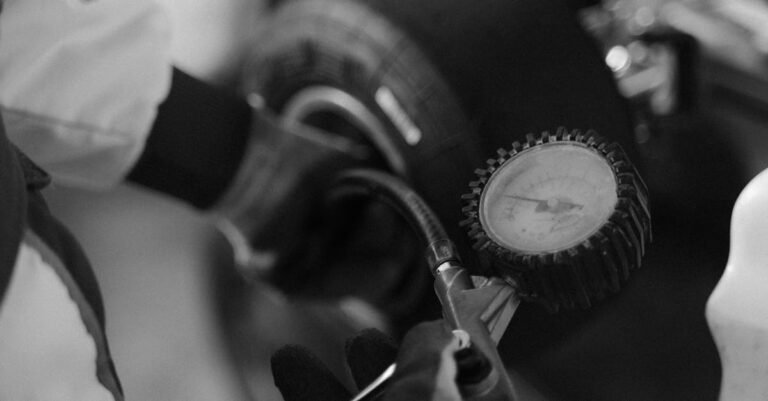Table of Contents
The Crucial Role of Wheel Balancing: Why Your Car Can’t Afford to Skip It
What Exactly *Is* Wheel Balancing? Let’s Break It Down
Static vs. Dynamic Balancing: Understanding the Difference
Static Balancing Explained
Dynamic Balancing Explained
Spotting the Signs: How Do You Know Your Wheels Need Balancing?
That Annoying Steering Wheel Vibration
Uneven or Rapid Tire Wear Patterns
Decreased Fuel Efficiency Sneaking Up on You
Shaky Floorboards or Seats
The Ripple Effect: Consequences of Ignoring Wheel Imbalance
Premature Tire Death: Say Goodbye Sooner Than You Think
Straining Your Suspension and Steering Components
Compromised Handling and Safety Risks
Hitting Your Wallet: Fuel Costs and Repair Bills
The Balancing Act: How Professionals Get It Right
The High Tech Balancing Machine
Applying Counterweights: The Secret Sauce
Wheel Balancing vs. Wheel Alignment: Clearing Up the Confusion
When Should You Get Your Wheels Balanced? Proactive Maintenance Tips
Investing in Smoothness: Is Wheel Balancing Worth the Cost?
Conclusion: Drive Smoother, Safer, and Smarter with Balanced Wheels
Frequently Asked Questions (FAQs)
How often should I get my wheels balanced?
Can I balance my own wheels?
Does hitting a pothole mean I need my wheels balanced?
Will wheel balancing fix all vibrations?
How long does wheel balancing take?
The Crucial Role of Wheel Balancing: Why Your Car Can’t Afford to Skip It
Okay, let’s talk cars. You love your ride, right? It gets you where you need to go, maybe offers a bit of freedom, perhaps even some fun. But like any relationship, it requires maintenance. We often focus on the big things – oil changes, engine checks, brakes. But there’s a subtle, yet incredibly important, aspect of car care that often gets overlooked: wheel balancing. Sounds technical? Maybe a little. But trust me, understanding and addressing wheel balance is fundamental to your car’s health, your safety, and even your wallet. Think of it as ensuring your car has its ‘feet’ planted firmly and evenly on the ground. When things are out of whack, even slightly, it creates a domino effect you *really* don’t want to experience. So, buckle up as we dive deep into why wheel balancing isn’t just recommended; it’s essential.
What Exactly *Is* Wheel Balancing? Let’s Break It Down
Before we get into the *why*, let’s clarify the *what*. What on earth is wheel balancing? Imagine holding a bicycle wheel by its axle and giving it a spin. If it’s perfectly balanced, it spins smoothly without wobbling or favoring one side. Now, imagine sticking a small piece of chewing gum onto one spot on the rim. Spin it again. See how it wobbles? How one heavier spot throws the whole rotation off? That’s essentially what happens with your car wheels, just on a more complex scale.
Wheel balancing is the process of equalizing the weight distribution of a combined tire and wheel assembly. No tire and wheel are perfectly manufactured with weight distributed absolutely evenly around their circumference and across their width. There are always tiny imperfections, heavy spots, or slight variations. Even the valve stem adds a bit of weight to one side! When a wheel spins rapidly (like it does when you’re driving), even these minuscule weight differences are magnified, causing vibrations and other problems. Balancing involves adding small, precisely measured weights to specific points on the wheel rim to counteract these heavy spots, ensuring the entire assembly spins smoothly, like that perfectly balanced bicycle wheel.
Static vs. Dynamic Balancing: Understanding the Difference
Now, not all balancing is created equal. There are two main types: static and dynamic. Think of them as addressing different kinds of wobbles.
Static Balancing Explained
Static balancing is the simpler of the two. It addresses imbalance on only one plane – think of it as up and down wobble, like a wheel hopping as it rolls. If you placed the wheel assembly on a non rotating spindle, the heavy spot would eventually settle at the bottom due to gravity. Static balancing aims to counteract this single heavy spot by placing a weight on the opposite side (180 degrees away) on the wheel centerline. It’s effective for narrower tires or situations where only simple ‘hop’ needs correction, but it doesn’t address side to side wobble.
Dynamic Balancing Explained
Dynamic balancing is the more sophisticated, and frankly, the more common and necessary method for modern cars. It addresses imbalance across two planes – both the up and down *and* the side to side wobble (shimmy). An imbalance that causes side to side shimmy only becomes apparent when the wheel is spinning (hence, ‘dynamic’). This type of imbalance requires weights to be placed on both the inside and outside rim flanges of the wheel to correct for forces trying to pull the wheel left or right as it rotates. Modern computerized wheel balancers primarily perform dynamic balancing, spinning the wheel at speed and measuring forces in multiple directions to determine precisely where and how much weight is needed for a perfectly smooth spin.
Spotting the Signs: How Do You Know Your Wheels Need Balancing?
Your car is actually pretty good at telling you when something’s wrong, you just need to know how to listen and feel. Wheel imbalance usually doesn’t happen overnight (unless you’ve hit a massive pothole or lost a wheel weight). It often creeps up gradually. Here are the telltale signs that your wheels are crying out for a balancing act:
That Annoying Steering Wheel Vibration
This is the classic symptom. You’re cruising along, perhaps reaching highway speeds (typically between 50 70 mph), and you start to feel a vibration or shimmy through the steering wheel. It might be subtle at first, but as the imbalance worsens or your speed increases, it becomes more pronounced. This vibration is often caused by an imbalance in the front wheels, as their wobble translates directly up the steering column to your hands. It’s not just annoying; it’s a clear signal that something isn’t right.
Uneven or Rapid Tire Wear Patterns
Take a good look at your tires. Are they wearing down evenly across the tread? Or do you see strange patterns, like scalloping (cup like dips around the edge) or flat spots? An unbalanced wheel doesn’t roll smoothly; it bounces and wobbles down the road. This erratic movement forces certain parts of the tire tread into contact with the pavement more forcefully or frequently than others, leading to accelerated and uneven wear. If your tires look like they’ve been chewed on unevenly, imbalance could be the culprit, drastically shortening their lifespan.
Decreased Fuel Efficiency Sneaking Up on You
This one’s a bit sneakier, but just as real. When your wheels are unbalanced, they don’t roll as freely. The engine has to work slightly harder to overcome the vibrations and maintain speed. Think about trying to run smoothly while wobbling – it takes more energy, right? Same principle applies to your car. While a single trip might not show a huge difference, over time, consistently driving with unbalanced wheels can lead to a noticeable decrease in your miles per gallon (MPG). You’ll be visiting the gas station more often, and who wants that?
Shaky Floorboards or Seats
Sometimes, the vibration isn’t just in the steering wheel. You might feel it through the floor, your seat, or even the whole car, especially at higher speeds. This often indicates an imbalance in the rear wheels. While front wheel imbalance usually manifests in the steering, rear wheel imbalance tends to create a more general vibration felt throughout the vehicle’s body. If your ride feels less smooth and more like a cheap motel’s “magic fingers” bed, it’s time to check the balance.
The Ripple Effect: Consequences of Ignoring Wheel Imbalance
Okay, so you feel a little vibration, or your tires look a bit weird. Is it *really* that big a deal? Can’t you just live with it? Short answer: No, you really shouldn’t. Ignoring wheel imbalance isn’t just about tolerating an annoyance; it sets off a chain reaction of negative consequences that impact your car’s health, safety, and your finances.
Premature Tire Death: Say Goodbye Sooner Than You Think
We touched on this, but it bears repeating. Tires are expensive! Unbalanced wheels are tire killers. The constant bouncing and scrubbing action caused by imbalance leads to rapid and irregular tread wear. Instead of getting the full 40,000, 50,000, or even 60,000 miles your tires were designed for, you might find yourself needing replacements much, much sooner. Balancing your wheels is a small investment compared to the cost of a new set of tires prematurely worn out due to neglect.
Straining Your Suspension and Steering Components
Those vibrations aren’t just felt by you; they’re battering your car’s suspension and steering systems. Think about it: every bounce, every shimmy sends shockwaves through the shocks (struts), springs, bearings, tie rod ends, and ball joints. These components are designed to absorb road imperfections, not constant, high frequency vibrations from unbalanced wheels. Over time, this added stress accelerates wear and tear, leading to potential failures and costly repairs down the line. Keeping wheels balanced protects these vital systems from unnecessary abuse.
Compromised Handling and Safety Risks
This is perhaps the most critical consequence. Your tires are the only things connecting your car to the road. If they aren’t rolling smoothly and maintaining consistent contact with the pavement, your vehicle’s handling characteristics are compromised.
- Reduced Traction: Bouncing tires have less consistent grip, especially problematic in wet or slippery conditions or during emergency maneuvers.
- Steering Instability: Vibrations can make steering feel less precise and potentially twitchy, reducing driver confidence and control.
- Increased Stopping Distance: If tires aren’t maintaining optimal contact, your braking effectiveness can be reduced.
While a minor imbalance might just feel like an annoyance, a significant imbalance, especially at highway speeds, can genuinely impact your ability to control the vehicle safely.
Hitting Your Wallet: Fuel Costs and Repair Bills
Let’s sum up the financial pain. Ignoring wheel balancing costs you money in multiple ways:
- More Frequent Tire Replacement: Due to premature wear.
- Increased Fuel Consumption: Due to the engine working harder.
- Potential Suspension/Steering Repairs: Due to accelerated wear on components.
The relatively small cost of getting your wheels balanced periodically pales in comparison to the accumulation of these expenses. It’s a classic case of “pay a little now or pay a *lot* later.”
The Balancing Act: How Professionals Get It Right
So, how do the pros actually fix this imbalance? It’s not guesswork; it’s a precise process using specialized equipment. When you take your car in for wheel balancing, here’s generally what happens:
The High Tech Balancing Machine
First, the technician removes the wheel and tire assembly from your car. Then, it’s mounted onto a sophisticated wheel balancing machine. This machine has a spindle that clamps onto the wheel, similar to how it mounts on your car’s hub. The technician inputs the wheel’s dimensions (rim diameter, width) into the machine’s computer. The machine then spins the wheel at a high speed, typically mimicking highway driving speeds. As it spins, sensitive electronic sensors measure any vibrations or force variations caused by weight imbalances, detecting both static (hop) and dynamic (wobble) issues with incredible accuracy.
Applying Counterweights: The Secret Sauce
Once the machine identifies the location and amount of imbalance, its computer tells the technician exactly where to place small counterweights on the wheel rim to cancel out the heavy spots. These weights come in various sizes (measured in grams or ounces) and types – some clip onto the rim flange, while others use adhesive backing to stick to the inner surface of the wheel (often preferred for alloy wheels to maintain a clean look). The technician carefully attaches the specified weights at the precise locations indicated by the machine. The wheel is often spun again to verify that the imbalance has been corrected and the assembly now spins smoothly. The balanced wheel is then remounted onto your car, usually torqued to the manufacturer’s specifications.
Wheel Balancing vs. Wheel Alignment: Clearing Up the Confusion
It’s incredibly common for people to confuse wheel balancing with wheel *alignment*, or to think they are the same thing. They are related, as both affect tire wear and handling, but they are distinct procedures addressing different issues.
- Wheel Balancing: Corrects uneven weight distribution within the wheel and tire assembly itself, preventing vibrations and uneven rotation. It focuses on how the wheel *spins*.
- Wheel Alignment: Adjusts the *angles* of the wheels relative to each other and the car’s frame (camber, caster, toe). It ensures the wheels are pointing in the right direction and sitting flat on the road. It focuses on how the wheel *points* and *sits*.
Think of it like this: Balancing ensures the wheel spins smoothly without wobbling. Alignment ensures the wheel is aimed straight ahead and rolls without scrubbing or pulling to one side. You might need one, the other, or both! A vibration usually points to balancing, while pulling to one side, crooked steering wheel when driving straight, or specific types of edge wear on tires often indicate an alignment issue.
When Should You Get Your Wheels Balanced? Proactive Maintenance Tips
Unlike an oil change, there isn’t always a strict mileage interval for wheel balancing. However, being proactive is key. Here are the best times to get it checked and done:
- When You Get New Tires: Absolutely essential. New tires *always* need to be balanced when mounted on wheels. Most tire shops include this in the installation cost.
- With Tire Rotation: Many mechanics recommend checking balance during routine tire rotations (typically every 5,000 to 8,000 miles). It’s a convenient time, and rotating tires can sometimes reveal or slightly change balance needs.
- After Tire Repair: If a tire has been removed for a flat repair (like patching a puncture), it should be re balanced before being put back into service. The patch itself adds weight!
- After a Hard Impact: If you hit a significant pothole, curb, or road debris, it can potentially knock off a wheel weight or even slightly bend a rim, throwing off the balance. If you notice vibrations shortly after such an event, get the balance checked.
- Whenever You Notice Symptoms: If you experience any of the signs we discussed earlier (steering wheel vibration, seat vibration, uneven tire wear), don’t wait. Get the balance checked promptly.
- Annually (As a Precaution): Even without obvious symptoms, having the balance checked once a year or every 10,000 12,000 miles is a good preventative measure, as weights can occasionally fall off or tire wear can subtly alter the balance over time.
Investing in Smoothness: Is Wheel Balancing Worth the Cost?
Let’s talk brass tacks. Getting your wheels balanced isn’t free. It typically costs anywhere from $15 to $30 per wheel, depending on your location, the type of vehicle, and the shop. So, for all four wheels, you might be looking at $60 to $120 or more. Is this expense justified?
Overwhelmingly, yes. Consider the costs of *not* balancing:
- Tires: A new set of tires can easily cost $400 to $1000+, depending on your vehicle. If imbalance cuts their life short by even 20 30%, you’re losing hundreds of dollars.
- Fuel: Even a small 1 2% decrease in fuel economy adds up over thousands of miles.
- Repairs: Replacing worn suspension components like wheel bearings or tie rods due to vibration induced stress can run into hundreds, if not thousands, of dollars.
- Safety & Comfort: How much is a smooth, controlled, and comfortable ride worth to you? Can you put a price on potentially avoiding a handling related incident?
When you weigh the relatively modest cost of wheel balancing against the potential expenses and risks of ignoring it, the value proposition becomes crystal clear. It’s a small investment in preventative maintenance that delivers significant returns in tire longevity, fuel savings, component protection, driving comfort, and, most importantly, safety.
Conclusion: Drive Smoother, Safer, and Smarter with Balanced Wheels
So there you have it. Wheel balancing might not be the most glamorous part of car maintenance, but its importance cannot be overstated. It’s the difference between a smooth, efficient, and safe ride versus a shaky, costly, and potentially hazardous one. From preserving your tires and suspension to ensuring optimal handling and even saving a bit on gas, keeping your wheels properly balanced is fundamental. Don’t ignore those vibrations or uneven wear patterns. Listen to what your car is telling you. Treat wheel balancing not as an optional extra, but as a core part of responsible vehicle ownership. Your car, your wallet, and your peace of mind on the road will thank you for it.
Frequently Asked Questions (FAQs)
1. How often should I get my wheels balanced?
It’s best practice to get wheels balanced whenever you buy new tires, after a tire repair, or when you notice symptoms like vibration or uneven tire wear. Many people also opt to check balance during regular tire rotations (every 5,000 8,000 miles) or at least once a year as preventative maintenance.
2. Can I balance my own wheels?
While technically possible with the right (and expensive) equipment, wheel balancing is generally not a DIY task. It requires a specialized, calibrated spin balancing machine to accurately detect imbalances and determine the correct weight placement. It’s best left to professionals at a tire shop or auto repair facility.
3. Does hitting a pothole mean I need my wheels balanced?
Not necessarily every time, but hitting a significant pothole *can* definitely knock off an existing wheel weight or even slightly deform the wheel, causing an imbalance. If you notice a new vibration after hitting a pothole, it’s highly recommended to have the wheel balance checked. It might also be wise to check the alignment.
4. Will wheel balancing fix all vibrations?
No. Wheel balancing specifically addresses vibrations caused by uneven weight distribution in the tire/wheel assembly. Vibrations can also be caused by other issues, such as bent wheels, out of round tires (tire defects), worn suspension components (like ball joints or tie rods), brake problems (warped rotors), or even drivetrain issues (like worn CV joints or driveshaft problems). If balancing doesn’t fix the vibration, further diagnosis is needed.
5. How long does wheel balancing take?
Balancing all four wheels is usually a relatively quick process. At a professional shop with the right equipment, it typically takes about 45 minutes to an hour, including the time to remove the wheels, perform the balancing on the machine, and remount them onto the vehicle.









